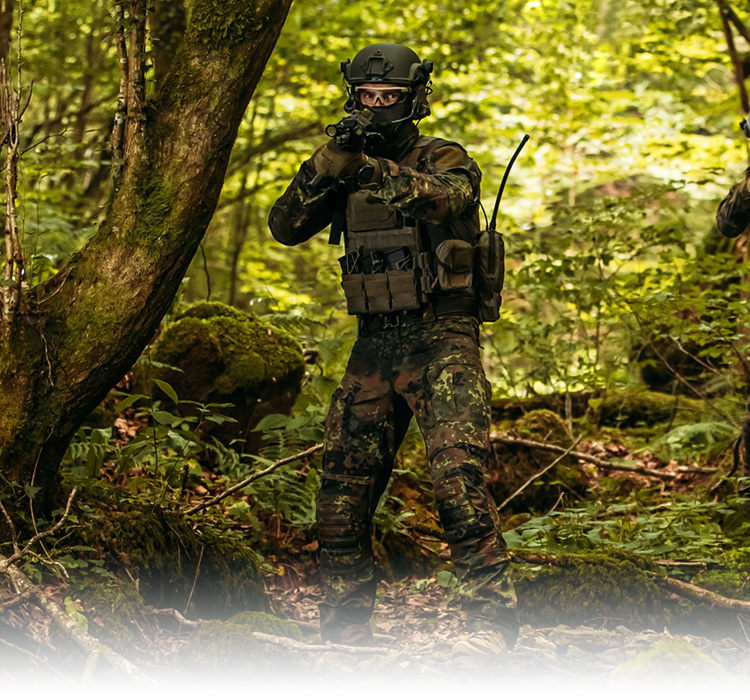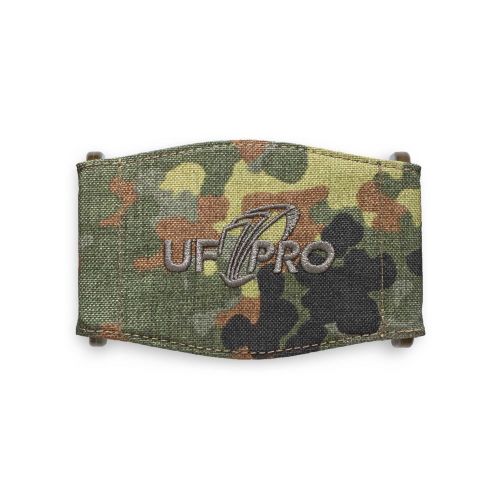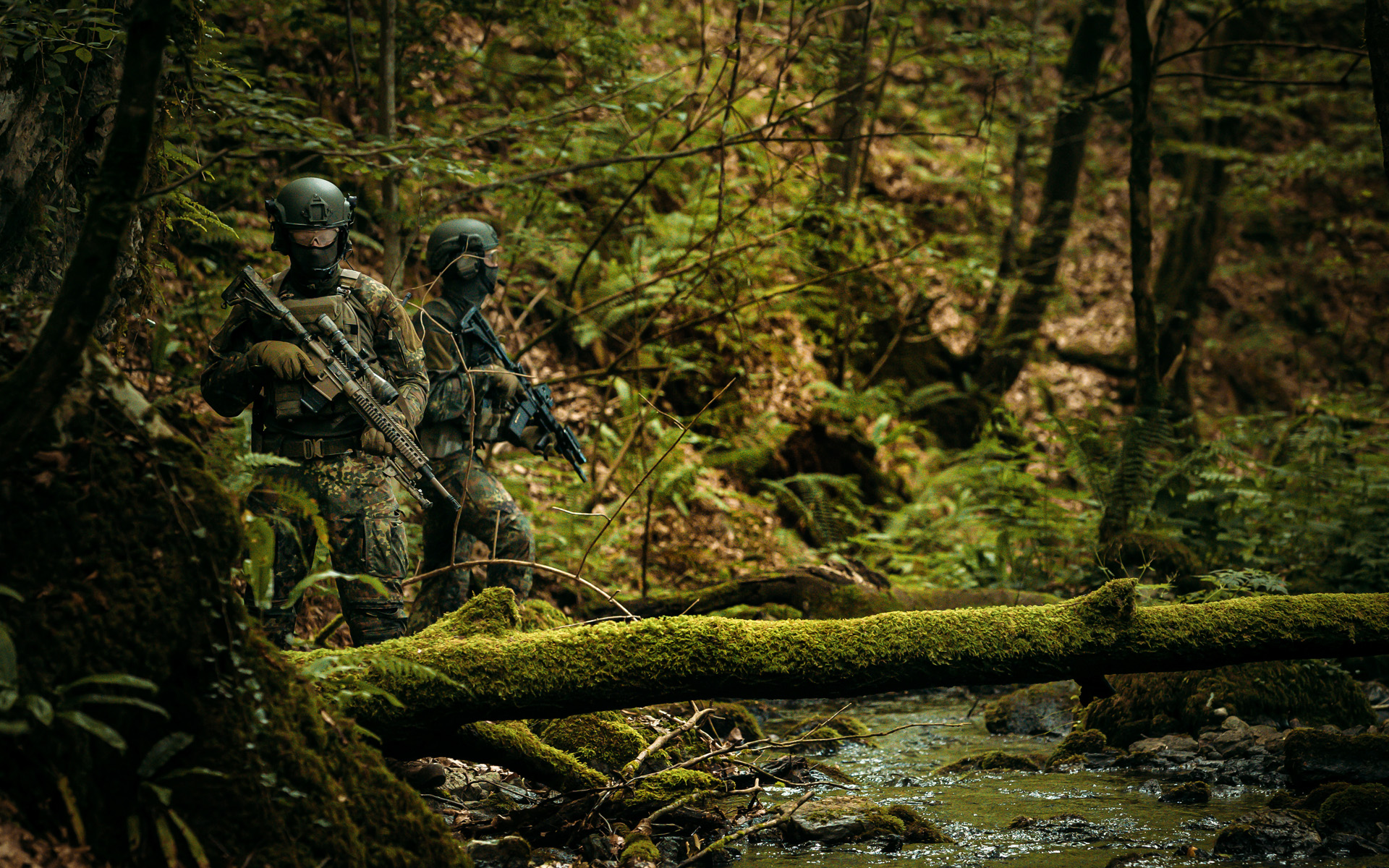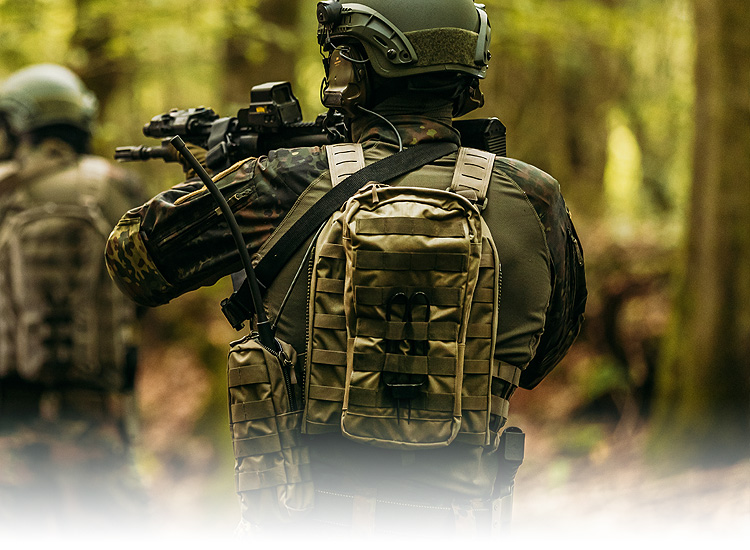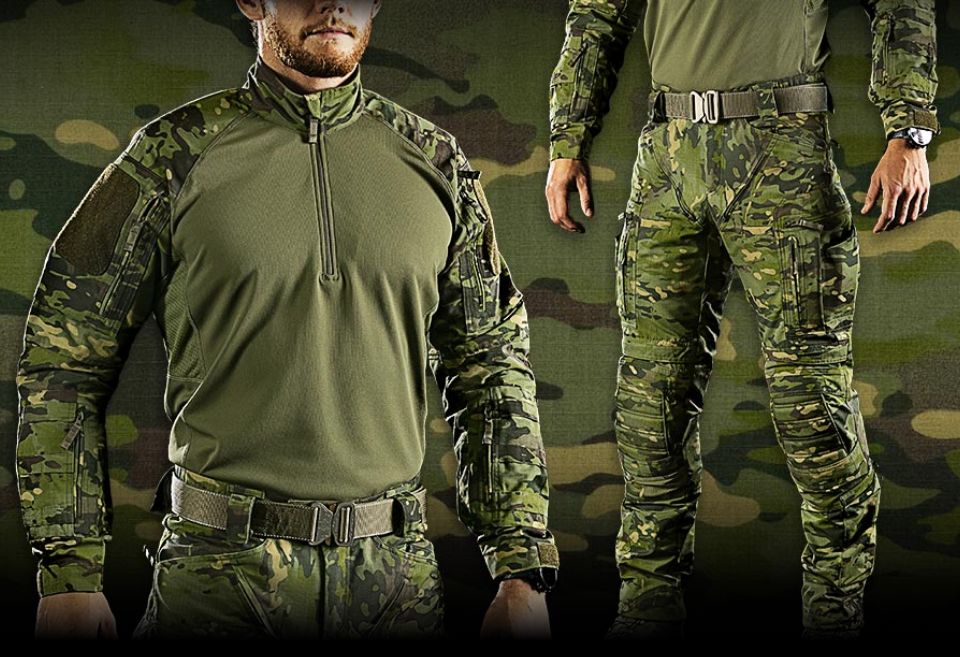Striker Gen.3 Boonie Hat
ALL UF PRO GEAR IN FLECKTARN
GET MORE INTEL ABOUT FLECKTARN.
The word Flecktarn originated from where?
It comes from two German words that together mean spotted camouflage (“fleck,” which translates as spot, blot, or pattern; and “tarnung,” which translates as camouflage). The pattern is also known as Flecktarnmuster or Fleckentarn.
Flecktarn’s colours appear in what proportions?
The 5-colour pattern (or its 5-Farb variation) is 13% black, 41% dark green, 18% brown, 9% light green, and 19% gray green. These colours are presented as spots of varying sizes scattered in a seemingly random arrangement on a moss green background.
Which countries use Flecktarn camouflage?
Germany is the main user of Flecktarn. The camouflage pattern has been issued throughout that country’s Bundeswehr service branches (Heer/army, Luftwaffe/air force, some Marine/navy units, and even the Sanitätsdienst/medical service). The pattern is also used by Ukraine and Austria (where it’s known as Flecktarnmuster), Denmark (M/84 and M/01), Japan (Jieitai), and Russia (Flecktarn-D).
Each of these countries have added their own twists to the basic pattern, building on its effectiveness in regions ranging from barren deserts to snow-covered tundras.
In what year was Flecktarn introduced in Germany?
The Bundeswehr began conducting field trials of Flecktarn in 1988 as a potential replacement for the green combat uniform its troops wore throughout the 1980s. By 1990, Flecktarn had become standard issue for the Bundeswehr.
What is the benefit of dithering?
Dithering, a process by which a camouflage pattern is incorporated within an image, powerfully interferes with the ability of an observer to discern the human form at a distance. Specifically, it causes the outlines of the wearer to break up and blend into his surroundings. As a pattern consisting of round spots, dithered camouflage also maximizes the colour-to-colour touchpoints, which increases its effectiveness compared to squared digital shapes.
To what extent is this camouflage effective?
It’s highly effective, and Germany’s continuing use of it serves as a testament to that effectiveness (the Bundeswehr has given no indication that it plans to replace Flecktarn any time soon). Ongoing German satisfaction with Flecktarn stems from it being an excellent choice for operations in the dense woodlands native to Europe, where sunlight barely filtering through the thick canopy of leaves causes the pattern’s darker-toned spots to seamlessly blend.
BROWSE FLECKTARN GEAR BY CATEGORY:

Striker Gen.2 Boonie Hat
BROWSE OTHER CAMOUFLAGE PATTERNS

